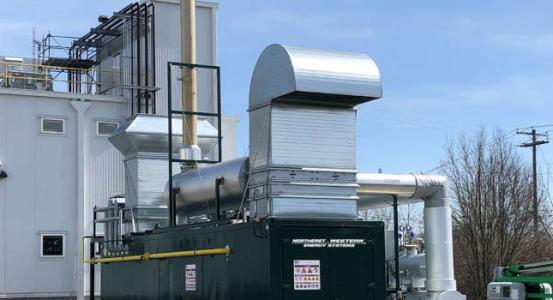Chrome-6 CrV1 Chromium Neutraliser
At Eco-Point, we care about delivering products that are kind to the environment and safe for the user. Chrome-6 is a safe and effective Chromium 6 Neutralising agent, designed to remove potential hazards in manufacturing, particularly the metal and textiles industries, and CHP’s Combined Heat & Power Installations.
Chrome-6 is a biodegradable liquid neutralizer that transforms toxic chromium 6 into harmless chromium 3. This acid-based solution facilitates a reaction that significantly decreases the concentration of chromium 6 dust, simultaneously wetting it. This means the dust cannot be inhaled by machine operatives, thus preventing serious health dangers.
This product is designed to be used directly at the source of chromium 6 (CrV1) contamination, effectively mitigating its hazardous, and potentially life-threatening effects.
How Chrome-6 Chromium Neutraliser works
In combustion engines, chromium 6 dust typically accumulates beneath insulation parts alongside stainless steel components. Prolonged exposure to heat results in the formation of chromium 6, often appearing as a yellow powder. By applying Chrome-6-Neutraliser, chromium 6 is converted into chromium 3, effectively containing the dust and preventing its dispersion into the air.
Chrome-6 is available in 10L, 20L, and 60L containers.
Download our Chrome-6 spec sheet here.
Chrome-6 Benefits
- Transforms chromium 6 into chromium 3, thereby converting a carcinogenic substance into a non-hazardous one.
- Its liquid form inhibits additional dust emissions.
- Entirely environmentally degradable.
- Significantly minimizes the likelihood of exposure and significantly reduces exposure risks.
- Assists employers in fulfilling their health and safety responsibilities by addressing carcinogens directly at the source.
- Simple to apply and ready for immediate use via a spray bottle.
- Appropriate for non-acid-sensitive substrates (Note: Conducting a resistance test before application is suggested).
- The lack of transport and CLP labeling simplifies transportation, storage, and utilization.
Chrome-6 Applications
Chrome-6-Neutraliser is applicable in industrial settings to address chromium 6 (dust), particularly during maintenance and overhaul tasks involving CHP (combined heat and power) units, used among others by horticulturalists to control heat and CO2 in greenhouses and to supply electricity. Prolonged heating of stainless steel in the insulation parts increases the likelihood of chromium 6 dust being released.
For example, in:
- Marine engines
- Diesel engines
- Gas turbines
For further information regarding applications and usage guidance, please get in touch with Eco-point here, or call 01293 532086.
What are the dangers of Chromium 6?
Chromium 6 (Also known as hexavalent chromium) is a chemical compound represented by the chemical formula Cr(VI). It is a toxic form of the element chromium. Chromium 6 can occur naturally, but it is also produced by industrial processes such as metal plating, leather tanning, and textile manufacturing.
Chromium 6, is also known to pose several hazards to human health and the environment, including:
- Carcinogenicity: One of the most significant hazards of chromium 6 is its carcinogenic properties. Prolonged exposure to high levels of chromium 6, particularly through inhalation, is associated with an increased risk of lung cancer. It has been classified as a human carcinogen by organisations such as the International Agency for Research on Cancer (IARC) and the U.S. Environmental Protection Agency (EPA).
- Respiratory Issues: Inhalation of chromium 6-containing particles or fumes can lead to respiratory problems such as coughing, wheezing, and shortness of breath. Chronic exposure may cause permanent damage to the respiratory system.
- Skin Irritation and Allergies: Direct contact with chromium 6 can cause skin irritation, redness, and dermatitis. Some individuals may develop allergic reactions upon repeated exposure, leading to chronic skin problems.
- Reproductive and Developmental Effects: There is evidence to suggest that chromium 6 exposure may have adverse effects on reproductive health and foetal development. Animal studies have shown potential reproductive toxicity and developmental abnormalities.
- Kidney and Liver Damage: Chronic exposure to high levels of chromium 6 may damage the kidneys and liver, leading to functional impairment and organ failure over time.
- Environmental Contamination: Chromium 6 contamination of soil, water, and air can have detrimental effects on ecosystems. It can bioaccumulate in plants and animals, potentially entering the food chain and posing risks to wildlife and humans.
- Regulatory Concerns: Due to its significant health hazards, chromium 6 is regulated by environmental agencies in many countries. There are strict guidelines and limits on its permissible levels in air, water, and soil to protect human health and the environment.
Efforts to mitigate chromium 6 hazards involve implementing proper handling and disposal procedures in industrial settings, conducting monitoring and remediation of contaminated sites, and developing safer alternatives in manufacturing processes to minimise exposure.
Due to its toxicity and potential health risks, chromium 6 is regulated by environmental agencies in many countries. Efforts to reduce its presence in the environment and limit human exposure are ongoing, particularly in industrial settings where it is commonly used.
